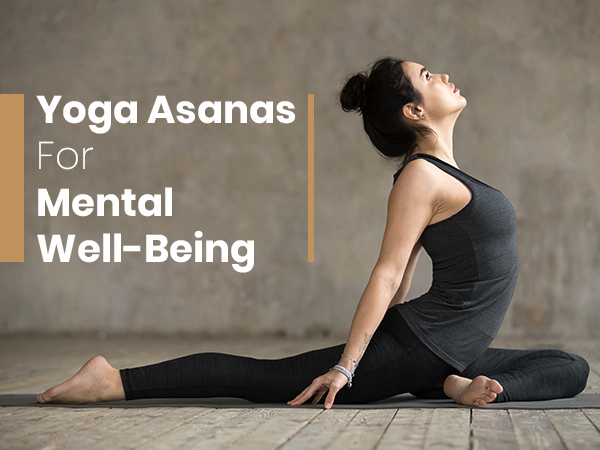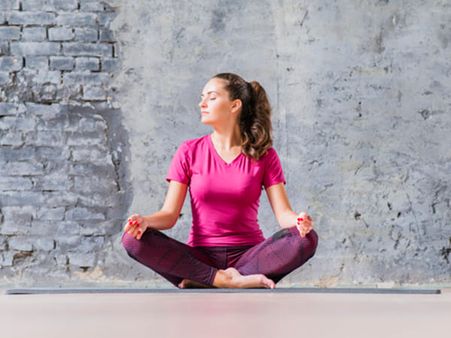Just In
- 13 hrs ago

- 13 hrs ago

- 16 hrs ago

- 17 hrs ago

Don't Miss
- Sports
 Who Won Yesterday's IPL Match 41? SRH vs RCB, IPL 2024 on April 25: Royal Challengers Bangalore End Losing Streak
Who Won Yesterday's IPL Match 41? SRH vs RCB, IPL 2024 on April 25: Royal Challengers Bangalore End Losing Streak - Finance
 Bajaj Group Stock Declares Rs. 60/Share Dividend: Buy Ahead of Record Date On 28 June?
Bajaj Group Stock Declares Rs. 60/Share Dividend: Buy Ahead of Record Date On 28 June? - Movies
 TRP Report Week 16: Anupamaa, Jhanak BEAT Yeh Rishta Kya Kehlata Hai, Ghum Hai. Top 10 Shows List
TRP Report Week 16: Anupamaa, Jhanak BEAT Yeh Rishta Kya Kehlata Hai, Ghum Hai. Top 10 Shows List - News
 MEA Dismisses US Human Rights Report On Manipur As 'Biased And Misinformed'
MEA Dismisses US Human Rights Report On Manipur As 'Biased And Misinformed' - Automobiles
 Royal Enfield Unveils Revolutionary Rentals & Tours Service: Check Out All Details Here
Royal Enfield Unveils Revolutionary Rentals & Tours Service: Check Out All Details Here - Technology
 Elon Musk’s X Is Launching a TV App Similar to YouTube for Watching Videos
Elon Musk’s X Is Launching a TV App Similar to YouTube for Watching Videos - Education
 AICTE introduces career portal for 3 million students, offering fully-sponsored trip to Silicon Valley
AICTE introduces career portal for 3 million students, offering fully-sponsored trip to Silicon Valley - Travel
 Escape to Kalimpong, Gangtok, and Darjeeling with IRCTC's Tour Package; Check Itinerary
Escape to Kalimpong, Gangtok, and Darjeeling with IRCTC's Tour Package; Check Itinerary
6 Yoga Asanas To Try In 2020 For Mental Well-Being
Among the many practices, we must adopt in 2020 is the practice of mental well-being in our daily routine. Have you made resolutions to stick by for this year? Planned how you can modify your lifestyle in order to incorporate them into your routine? Many a time it is the gap between where we want to be and where we are that causes us distress. New year resolutions help us put our plans to action by giving us the chance at a fresh start.

Regular practice of yoga builds your self-esteem, makes you calmer and drives away stress. When we are physically fit, we also gain mental fitness. This is the strength that we need to tackle any obstacle or hurdles in our path.
Here are a few practices that you can include in your daily or weekly schedule for better all-round health.

Jal Namaskar
The tattva of Jal or water is one that nurtures life. To show our gratitude to the life-giving water, we can offer the salutation of jal namaskar. The vinyasa is designed with a total of 28 counts containing asanas such as matsyendra asana, Halasana, Supta Vajrasana and Matsya asana. Practicing jal namaskar will help you identify and experience the water element within your body. This namaskar can be performed at any time of the day on an empty stomach.
How to do:
Asana
1:
Padmasana
-
Lotus
Pose
Asana
2:
Dandasana
-
Staff
Pose
Asana
3:
Naukasana
-
Boat
Pose
Asana
4:
Dandasana
-
Staff
Pose
Asana
5:
Padmasana
-
Lotus
Pose
Asana
6:
Dandasana
-
Staff
Pose
Asana
7:
Halasana
-
Plough
Pose
Asana
8:
Adhomukha
Swanasana
-
Downward-facing
Dog
Pose
Asana
9:
Supta
Vajrasana
-
Reclined
Thunderbolt
Posture
Asana
10:
Matsyasana
-
Fish
Pose
Asana
11
&
12:
Ardha
Matsyendrasana
-
Half
Pose
Dedicated
to
Sage
Matsyendra
Asana
13:
Padma
Sirshasana
-
Lotus
Headstand
Asana
14:
Pindasana
-
Embryo
Pose

Prithvi Namaskar
Prithvi or earth is the tattva of strength, form, patience and vitality. The prithvi namaskar is a tribute to this divine tattva that we call our home. Through the practice of this namaskar, which is a vinyasa consisting of 27 counts, the body forges the capacity to imbibe the divine qualities of the earth tattva. This Namaskar can be performed at any time of the day on an empty stomach.
How to do:
Asana
1:
Gupt
Padmasana
-
Hidden
Lotus
Pose
Asana
2:
Adavasana
-
Reversed
Corpse
Pose
Asana
3:
Shalabhasana
-
Locust
Pose
Asana
4:
Urdhwa
Mukha
Swanasana
-
Upward-facing
Dog
Pose
Asana
5:
Parvat
asana
-
Mountain
Pose
Asana
6:
Dolasana
-
Pendulum
Pose
Asana
7:
Vajrasana
-
Thunderbolt
Posture
Asana
8:
Adhomukha
Swanasana
-
Downward-facing
Dog
Pose
Asana
9:
Marichyasana
-
Pose
Dedicated
to
Sage
Marichi
Asana
10:
Adhomukha
Swanasana
-
Downward-facing
Dog
Pose
Asana
11:
Marichyasana
-
Pose
Dedicated
to
Sage
Marichi
Asana
12:
Adhomukha
Swanasana
-
Downward-facing
Dog
Pose
Asana
13:
Dandasana
-
Staff
Pose
Asana
14:
Karnapeedasana
-
Ear
Pressure
Pose
Asana
15:
Dandasana
-
Staff
Pose
Asana
16:
Pindasana
-
Embryo
Pose
Asana
17:
Vajrasana
-
Thunderbolt
Posture
Asana
18:
Mayurasana
-
Peacock
Pose
Asana
19:
Balasana
-
Child
Pose
Asana
20:
Bhoomi
Naman
Padmasana
-
Lotus
Bowing
to
Earth
Posture
Asana
21:
Advasana
-
Reversed
Corpse
Pose
Asana
22:
Parvatasana
-
Mountain
Pose
Asana
23:
Yajnasana
-
Offering
Posture
Asana
24:
Parvathasana
-
Mountain
Pose
Asana
25:
Yajnasana
-
Offering
Pose
Asana
26:
Parvathasana
-
Mountain
Pose
Asana
27:
Gupt
Padmasana
-
Hidden
Lotus
Pose

Murcha Pranayam
Benefits:
- Prevents genetic diseases from occurring by altering the structure of the DNA
- Provides the practitioner with a subtle sensation of euphoria.
- Enhances the mental energy of the practitioner.
- Cleanses the mind completely and the practitioner feels extreme joy and lightness, which can be equated with the feeling of floating
- Sit in any comfortable pose (such as Sukhasan, Ardhapadmasan or Padmasana)
- Straighten your back and close your eyes
- Place your palms on your knees facing up (in Prapthi Mudra)
- Bend your head forward and reach your chin towards your chest
- Inhale through your nose and fill your lungs with air
- Lift your head, take it behind and rest your head on your shoulders
- Open your mouth without breathing out
- Retain your breath for as long as possible
- After you have held the breath for a while, close your mouth, bend your head forward, reach your chin towards your chest and breathe out
How to do:
Duration: You may begin by practicing this breathing technique for five minutes a day and gradually increase it with time.

Ujjayi Pranayama
Benefits:
- Acts as an effective treatment for hypothyroidism and hyperthyroidism
- Enhances your voice and helps you sing better
- Cleanses your digestive organs
- Helps you produce sound from a conch shell
- Sit in any comfortable pose (such as Sukhasan, Ardhapadmasan or Padmasana)
- Straighten your back and close your eyes
- Place your left palm on your knee facing up (in Prapthi Mudra)
- Contract your throat and breathe in from your nose
- As you inhale, you must make an audible sound
- After you have slowly filled your lungs with air, make an ‘O' shape with your lips and exhale through it
How to do:
Duration: You may begin by practicing this breathing technique for five minutes a day and gradually increase it with time.

Khand Pranayama
Benefits:
- This powerful pranayama affects the functioning of different systems of the body and affords countless benefits. This pranayama will help you develop physically, mentally and emotionally.
- Increases lungs capacity to take in oxygen
- Builds stamina
- Promotes excess fat loss
- Improves skin health
- Exclusively beneficial to sportsperson, such as athletes, basketball players, etc.
- Increases lifespan
- Reverses age by retaining youth
- Useful for mountain climbers, athletes and runners
- Improves stamina
- Athletes can use this breathing technique to enhance their perseverance levels for an entire range of games and sporting activities.
- This pranayama functions as a wonder drug for individuals with shortness of breath.
- One can effect positive change and tranquillity by practising this pranayama in just three or four days.
- Sit down in Dandasana, keep your back straight and breathe for some time.
- Fold your legs in Sukhasana and prepare your mind for the practice.
- Sit in any comfortable pose (such as Sukhasan, Vajrasana, Ardhapadmasan, Padmasana or Siddhasana) Ideal posture is Poorna Padmasana
- Straighten your back and close your eyes
- Place your palms on your knees facing up (in Prapthi Mudra)
- As you inhale, divide your breath into two equal parts
- Without retaining the breath in your lungs, exhale twice
How to do:
Duration: You may begin by practicing this breathing technique for 1-2 minutes a day and gradually increase it with time.

Sthiti Dhyan
This is a meditation technique to help calm your nerves, raise mindfulness and deflect any negative experiences.
How to do:
- Stand or sit comfortably
- Be mindful of the surroundings, noises, smells, colours etc.
- Slowly turn to the right side to gaze and observe, then turn to the left and repeat
- Use a journal to make a note of all your observations and the different sensations you felt
- This will help increase your observation powers, make you more focussed and alert
- Removes distractions
When we are unhappy with ourselves or any situation is when we tend to shun socialising. This leads to rising panic, frustration, and anxiety. By shying away from any interactions with friends, well-wishers and family, we may coop ourselves up. But this in fact will only serve to worsen the problem. To become who we want to be, or to better ourselves in any small way, we must take that first step towards growth and our own well-being.
Yoga is a discipline that can train both your mind and body. This helps in regulating your emotions for better overall well-being. Let this year mark the transition towards the journey where you prepare to be the best version of yourself.

-
 healthBust Bloating: 5 Exercises Every Teenage Girl Needs For A Happy Tummy
healthBust Bloating: 5 Exercises Every Teenage Girl Needs For A Happy Tummy -
 healthDelhi Air Quality: Breathing Exercises To Combat The Effects Of Air Pollution
healthDelhi Air Quality: Breathing Exercises To Combat The Effects Of Air Pollution -
 pregnancy parentingMental Health: Teaching Meditation To Kids; Benefits And Simple Techniques
pregnancy parentingMental Health: Teaching Meditation To Kids; Benefits And Simple Techniques -
 healthYoga For Abs: 5 Celeb-Inspired Poses For Sculpted Abs
healthYoga For Abs: 5 Celeb-Inspired Poses For Sculpted Abs -
 pregnancy parentingExpert Talks About The Benefits Of Prenatal Yoga For Expecting Mothers
pregnancy parentingExpert Talks About The Benefits Of Prenatal Yoga For Expecting Mothers -
 healthDoctors’ Day: The Early Indian Medicine Inventions; Its Not Just Ayurveda!
healthDoctors’ Day: The Early Indian Medicine Inventions; Its Not Just Ayurveda! -
 healthHave You Heard Of Hot Yoga? Can It Aid Weight Loss?
healthHave You Heard Of Hot Yoga? Can It Aid Weight Loss? -
 healthWhat Is The First Yoga Pose You Should Learn?
healthWhat Is The First Yoga Pose You Should Learn? -
 fashionInternational Yoga Day 2023: What To Wear For Yoga, An Easy Guide To Select Ideal Outfit
fashionInternational Yoga Day 2023: What To Wear For Yoga, An Easy Guide To Select Ideal Outfit -
 insyncInternational Yoga Day 2023: Yoga Gifts For Every Zodiac Sign
insyncInternational Yoga Day 2023: Yoga Gifts For Every Zodiac Sign -
 healthInternational Day of Yoga: What Is Laughing Yoga? How To Do It?
healthInternational Day of Yoga: What Is Laughing Yoga? How To Do It?


 Click it and Unblock the Notifications
Click it and Unblock the Notifications



